Manual certificate management can quickly spiral into a time sink, especially as your learner numbers grow. I’ve seen organisations struggle with spreadsheets, lost credentials, and endless email chains—none of which scale well or inspire confidence.
Digital credential management software promises a smarter way forward. With the right platform, you can automate issuing, streamline verification, and keep every achievement secure and instantly accessible. That means less admin hassle and a better experience for both learners and staff.
In this article, I’ll break down what digital credential management software actually does, why security and integration matter, and which features set the best platforms apart. You’ll get a side-by-side look at the top ten solutions, including real pricing, automation options, and how each one fits different needs—from MOOCs to compliance-heavy institutions.
By the end, you’ll have a clear, practical comparison to help you choose the right platform for your organisation—without the guesswork or surprises.
Understanding Best Digital Credential Management Software
What is digital credential management software?
Digital credential management software refers to specialised platforms that guide every step of acknowledging achievement online. Organisations can create, distribute, manage, and instantly verify digital certificates, badges, or learning records—sidestepping the pitfalls of physical paperwork.
The leap from basic spreadsheets is not just about cutting corners; it’s about automation, security, and scale. These platforms anchor recognition, even as learner numbers surge.
By implementing a centralized digital credentialing platform, one firm reduced the time spent on credential verification by 85%.
You can think of a digital credential like a passport—it’s “stamped” at critical milestones, chronicling a learner’s journey.

Let’s unpack the stages a credential typically passes through:
- Creation/Design
Credentials are uniquely crafted to reflect specific learning goals, standards, and organisational branding. - Issuance/Distribution
Digital proof is sent out automatically when milestones—like course completions—are reached. - Management
Platforms oversee issued credentials, monitor their status, and manage renewals or revocations as necessary. - Verification
Authentication lets anyone check legitimacy with a click. Secure links, digital signatures, or even blockchain validation are regularly used. - Expiration/Revocation
Credentials may expire or be revoked, helping institutions keep their records compliant and current.
Recognising these steps, software evolves beyond simply being a passive log. Each stage plays a part in making the platform an active guardian of trust and consistency.
Ultimately, it’s not about having a bigger filing cabinet—it’s about empowering organisations to strategically manage recognition at any scale.
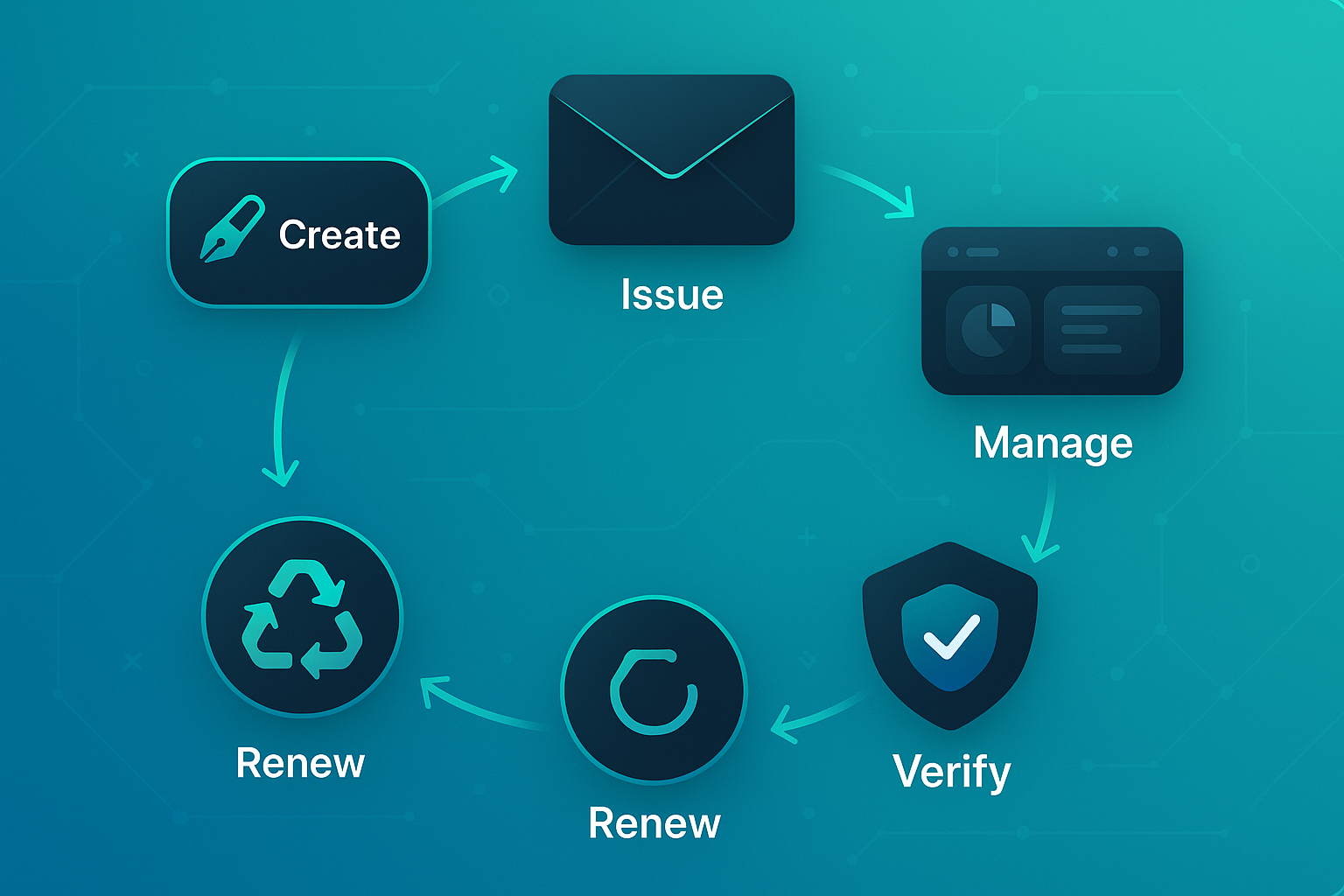
How do digital credentials benefit online training providers?
For online training providers and MOOCs, digital credentialing is a game-changer. The advantages cluster around three pillars.
First, there’s learner motivation. Who doesn’t feel a spark when an official badge drops into their inbox right after they finish a challenging module?
These quick, personal wins drive repeat engagement.
Additionally, there’s visibility and outreach. Imagine every credential posted on a professional network as a mini-billboard—for free. These digital badges quietly broaden your audience, bringing new learners without extra marketing spend.
And then, efficiency and scalability step in. Remember the scramble for lost certificates or endless admin emails? Automation sweeps that away.
The platform handles bulk credentialing while central control delivers real-time analytics, giving educators direct sight of progress.
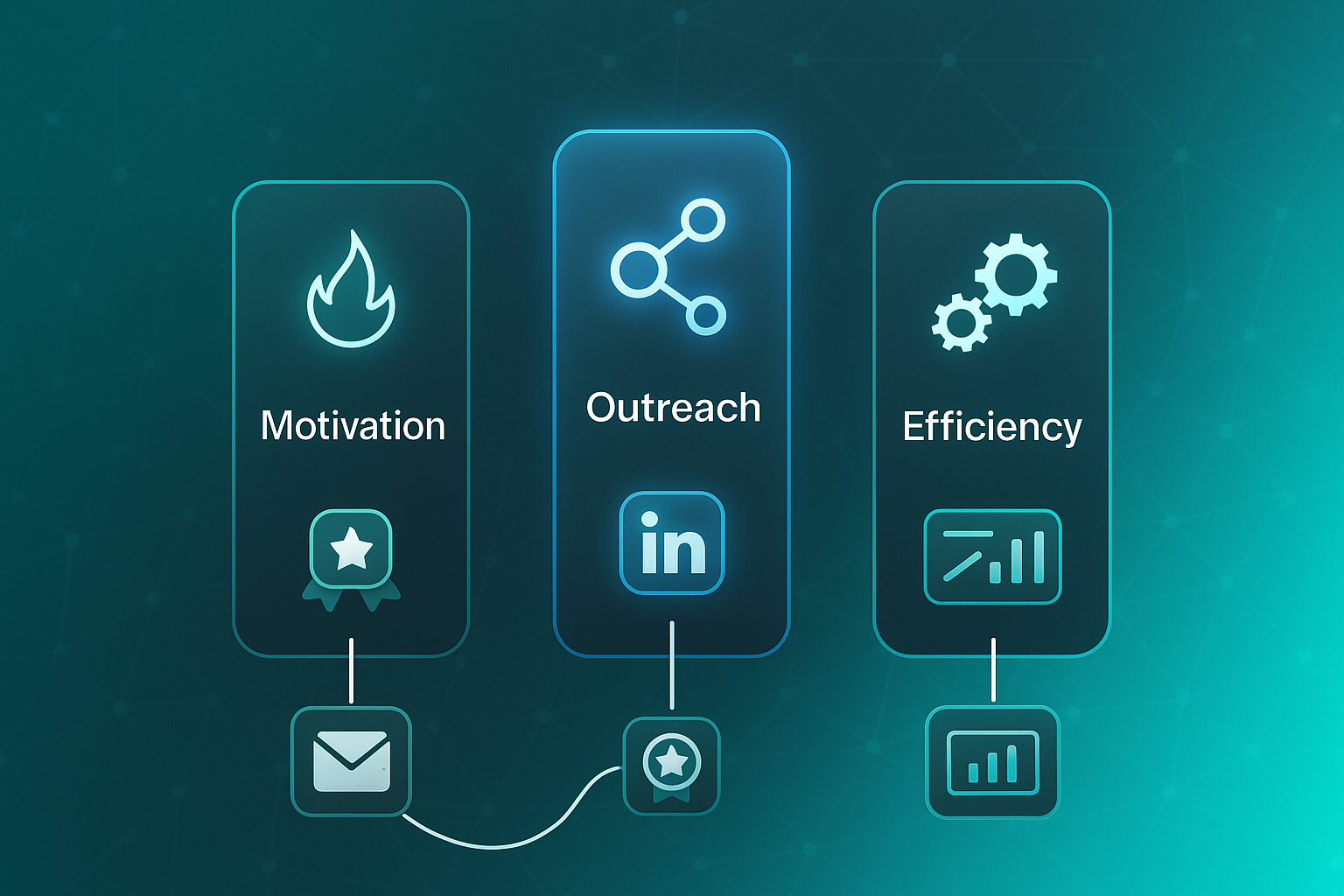
All told, digital credential platforms now feel essential for providers wanting loyalty, audience growth, and operations that don’t buckle under scale.
Why is verification and security essential in digital credentialing?
But, let’s get real—why does security matter in this context? The truth: credibility hinges on verification. If credentials can’t be trusted, everything else collapses.
Leading platforms protect every record with cryptography and tamper-evident signatures. Some go further, using blockchain for verification.
Why is this a big deal? Because instant validation means hiring managers or regulators have confidence in what they see. There’s no paper chase—just certainty with a click.
When rules change or a credential needs retracting, audit trails and strong revocation controls make every step traceable. If you’re awarding professional or regulated qualifications, robust security shifts from “nice-to-have” to “non-negotiable”.
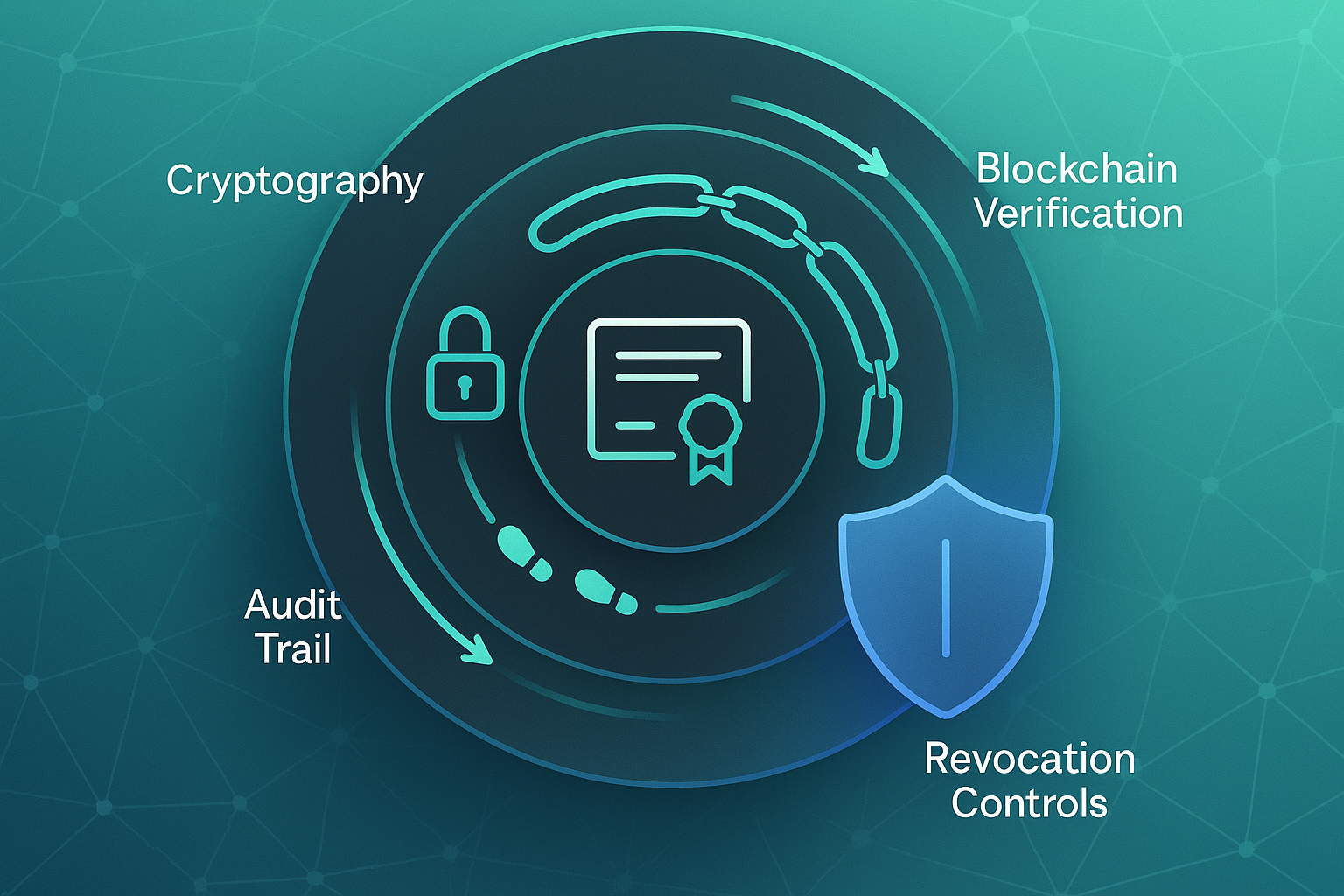
Weak or missing verification? That’s how reputations get shattered—and trust evaporates.
How do platforms differ? Usability, integration, and scalability
Not every platform is created equal. How quickly can your team start using the software?
Some offer intuitive dashboards so anyone can dive in, while others cater to advanced needs, giving experts deep customisation options.
Integration is another major factor. If the platform can’t blend with your LMS, HR tools, or social networks, frustration creeps in.
Seamless integration makes everything smoother and even turns each new credential into a marketing springboard.
Scalability is also vital. Bulk issuance meets demand as your learner base balloons, while real-time insights keep decision-makers in the loop.
Flexible administration grows as your needs evolve.
Picking the right system is a bit like choosing the right engine for a car—misalignment means frustration, but the right fit delivers reliability, visibility, and smooth scaling.
There’s a lot to weigh up. Now that you know the mechanics, the next section unpacks the specific criteria that set exceptional digital credential platforms apart—even in crowded markets.
What should you look for in digital credential management software platforms?
Choosing digital credential management software isn’t just a technical decision—it impacts everything from your day-to-day workflow to how your organisation is perceived out in the world.
Finding your perfect fit means looking at costs, reliability, integration, and security, while also asking: which features actually make life easier for busy teams and learners?
So, what are the key criteria and industry benchmarks that should guide your shortlist? Here’s a quick rundown of what you’ll want to compare when reviewing the leading platforms:
- Pricing Models and Scalability
Most platforms use pay-per-credential, monthly, or enterprise plans. Certifier starts at $299/year for 100 credits per month. Accredible begins at $38/month, Credly at $83/month. VerifyEd uses pay-per-credential pricing, with large batches from £0.75/credential. Batch discounts help high-volume issuers save. - Verification and Security Standards
Secure, tamper-resistant credentials are the norm. Certifier, Accredible, and VerifyEd all offer blockchain-based verification with instant validity checks. GDPR (General Data Protection Regulation) and FERPA (Family Educational Rights and Privacy Act) compliance comes as standard. - Core Features and Workflow Automation
Look for bulk issuance, custom templates, workflow triggers, and analytics. Certifier and Accredible support bulk creation and automations. White-labelling is included or tiered. - Integrations and Setup
Top options connect with LMS (Learning Management Systems like Moodle/Canvas), CRM (Customer Relationship Management such as Salesforce/HubSpot), and tools like Zoom and Zapier. APIs (Application Programming Interfaces) are common, but quality of documentation and onboarding varies. - Social Sharing and Engagement
One-click sharing of badges to LinkedIn is now standard. Accredible and Credly provide in-depth analytics on sharing and clicks. Branding/white-labelling may require premium tiers. - Onboarding and Support
Setup and issuing often takes just 1-2 weeks. Expect live chat, detailed guides, and fast email support—something that users highlight for Certifier, Accredible, VerifyEd, and Credly.
By quickly comparing these criteria, you’ll sift out platforms that can truly offer efficiency, security, and easy integration—without surprise headaches as your needs grow.
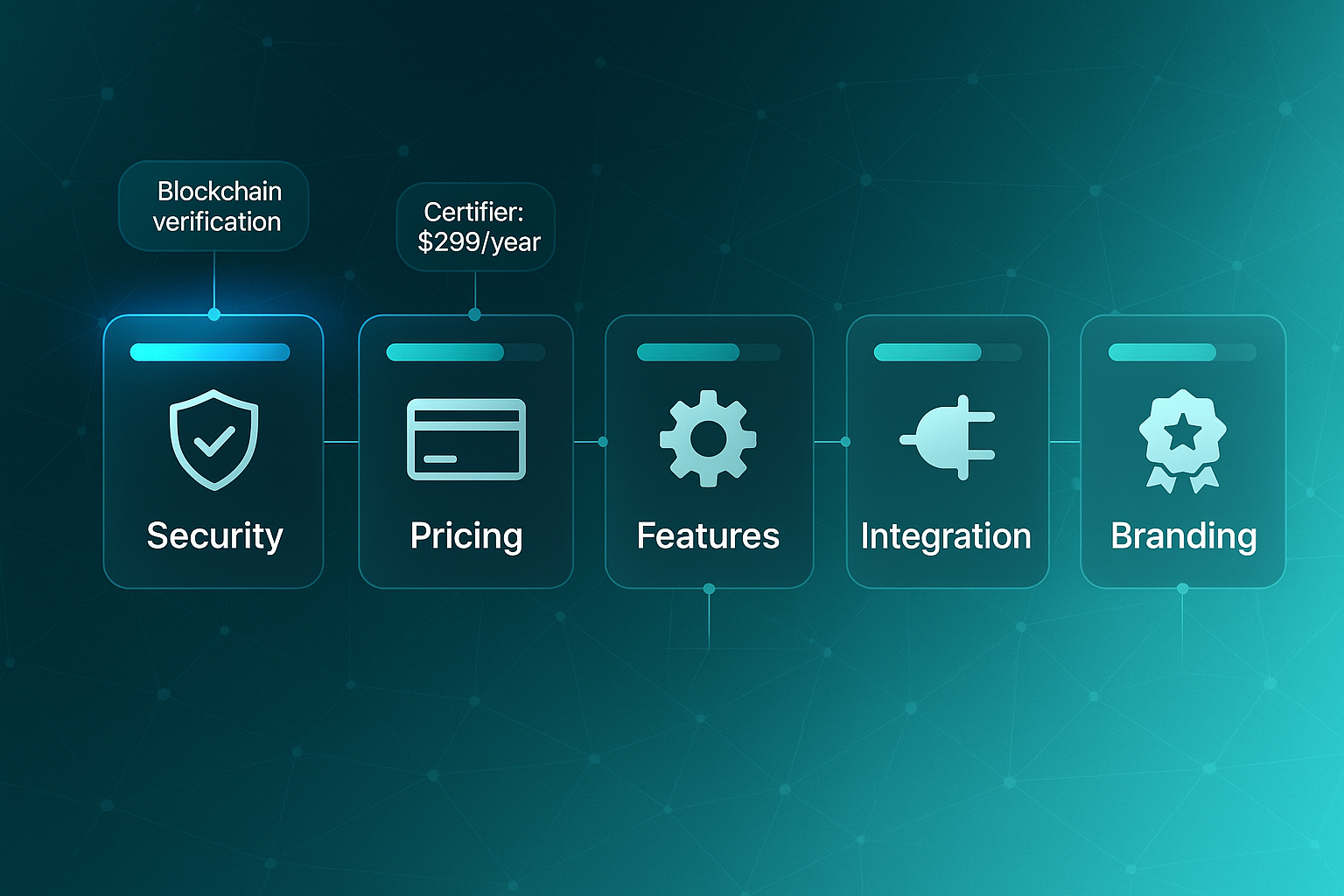
With this framework in hand, you’re ready for a confident, needs-driven decision.
Up next: a closer look at how VerifyEd’s pipeline and credentials measure against these industry standards.
Top 10 Best Digital Credential Management Software Platforms
1. VerifyEd
Streamlining Massive Credential Workflows: How VerifyEd Handles 5,000+ MOOC Certificates in Minutes
Let’s start with VerifyEd, a platform that’s tailor-made for online education on a grand scale. If you’re running a MOOC (Massive Open Online Course) or any high-volume training, you know the headache of issuing credentials manually. With VerifyEd, that entire process shifts gears—at the push of a button, thousands of certificates go out to learners in one sweep.

Picture it: your cohort graduates, and every single learner receives their digital certificate within minutes. No more days wasted updating spreadsheets or tracking email deliveries by hand. The dashboard tracks delivery in real time, flagging missing or failed credentials so you can jump in and fix issues immediately. Manual credential management? That’s ancient history.
Eliminating Credential Fraud with Blockchain: Trust That Scales for Online Programs
Here’s the thing that organisations focused on reputation and compliance will appreciate. VerifyEd uses blockchain technology for verification, meaning each badge or certificate is cryptographically locked down from the start. So when someone scans the credential’s QR code, verification happens right there—no delays, no second-guessing.

This tamper-evident system protects the integrity of every credential, which is crucial for regulated online training. Employers and regulators can trust instantly that what they see is genuine—no more chasing paper trails or waiting for email confirmations.
Research into blockchain-based prototypes for degree verification demonstrates a viable technological path toward ensuring academic integrity and combating the persistent issue of fraudulent credentials.
Integration Fit for Digital-Native Providers: Automation That Removes Manual Hassles
VerifyEd slots right into the platforms used by today’s digital educators. Imagine your LMS (Learning Management System) automatically triggering badge delivery as soon as a course is complete. There’s no need for instructors to push buttons for every student—automation takes over, freeing you up to focus on engagement rather than admin work. Credentialing becomes a seamless part of the learning experience. It’s not a separate, clunky add-on at the end of a module, but a streamlined extension of the learner’s journey.
Transparent, Predictable Pricing for Scaling Cohorts: Real MOOC Budgeting Scenarios
Unpredictable bills? Not with VerifyEd. The platform goes for a simple pay-per-credential pricing system. If you’re running a massive cohort—say, 10,000 learners—you pay only for credentials issued, sometimes as low as £0.75 per credential. That means you can forecast costs down to the penny, useful for planning big launches or seasonal enrolments.
There are none of those sneaky minimums, no subscription traps, no piles of unused credits cluttering your budget. Adjust your spending to match actual enrolment, ensuring every pound goes towards real learner outcomes.
Driving Student Engagement and Viral Marketing: The MOOC Multiplier Effect
There’s an unexpected bonus here too. When students receive their digital badges, countless of them share their achievements across LinkedIn and other professional networks. This spreads your course’s reputation organically, expanding reach without dedicated marketing spend. Plus, instant recognition motivates learners to finish—and encourages more of them to jump in. The result is a cycle of engagement that powers reputation and growth, all backed by automation and instant verification.
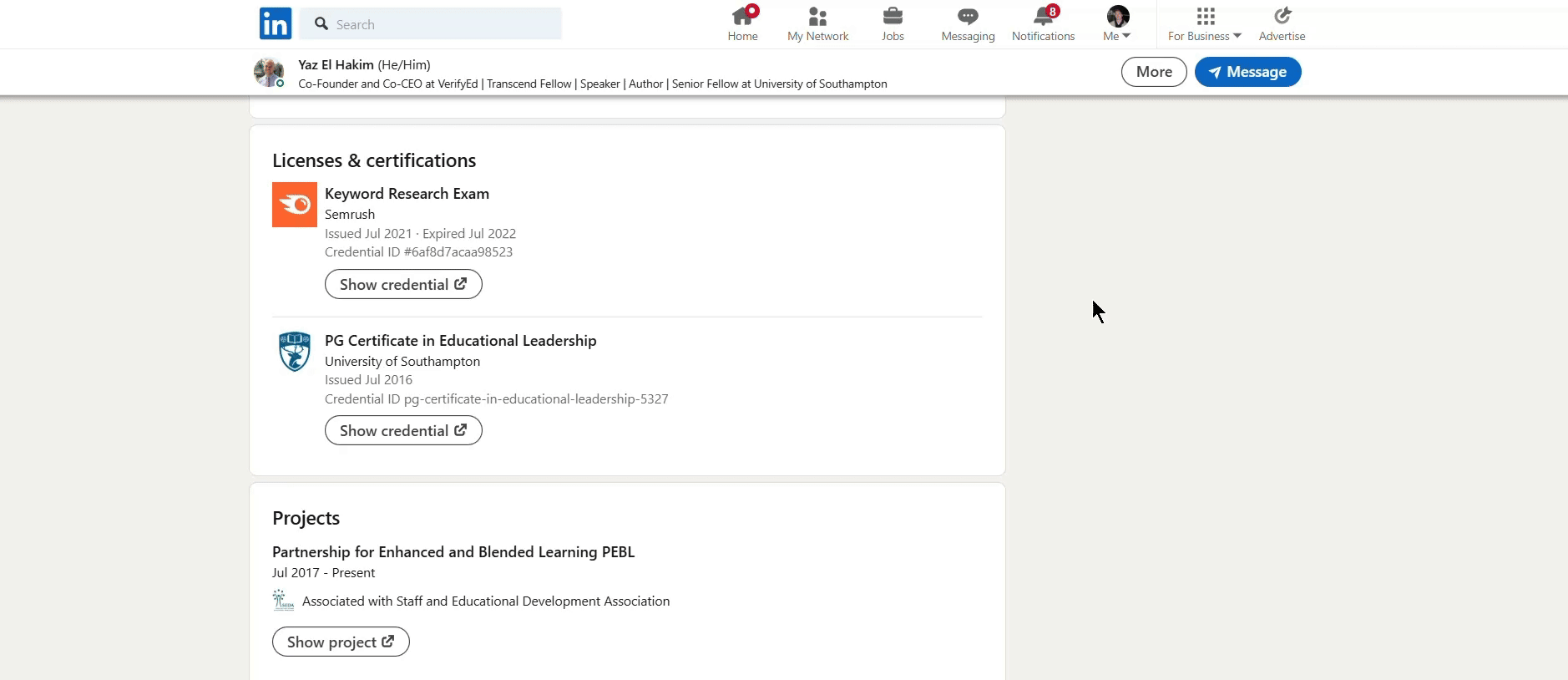
So if you’re looking for a true end-to-end solution that combines massive automation, bulletproof security, easy integration, and no-nonsense pricing, VerifyEd sets a strong standard.
Looking to improve your course sales, marketing & experience?
Book a free course optimisation strategy call with one of our specialists.
Book a call
2. Accredible
Core Features and High-Volume Credential Administration
Accredible arms administrators with a central dashboard for handling large-scale badge and certificate distribution.
Sending credentials to 100 to 10,000+ learners? Just import your recipient data, select from 40+ templates, and schedule the release—all in under an hour.
A big bonus is that credentials are editable both before and after issuing.
If there’s a spelling error or missing detail, you can update individual credentials without rerunning batches.
Need to revoke or expire a credential? With instant action and a timestamped audit trail, compliance is simple.
Analytics are at the centre of Accredible’s admin tools.
Track which credentials have been sent, who’s completed modules, and engagement by instructor or cohort.
Segment analytics, export .csv reports, and trigger automated reminders if engagement dips below your goals.
Integrations: Automation with LMS and Third-Party Workflows
Accredible integrates with Canvas, Moodle, and Blackboard—the backbone of modern online learning.
Setting up a Canvas LTI integration only takes 1–2 hours.
Once connected, you can trigger credential issuing, editing, or revoking right from the LMS, cutting down on system-switching.
Zapier support brings no-code automation: tie digital badges to achievements tracked in Google Sheets, CRM forms, or payments.
Automatic alerts land in Slack or email.
And for wider impact, one-click LinkedIn sharing lets learners post digital badges on their profile.
Pricing and Scaling Considerations
There’s a free starter plan for up to 20 recipients a year.
The Launch Plan is $83/month ($996/year) for 250 unique recipients.
For MOOC providers handling cohorts of 1,000+, Connect and Enterprise plans offer custom pricing and typically take 2–5 days to onboard or scale up.
Retakes don’t eat into your recipient quota, since only unique individuals count.
White-labelling and advanced analytics are exclusive to the Enterprise level.
Organisations that prioritise branding or reporting should factor this into their budget from the start.
Engagement, Social Sharing, and Real-World Impact
Recipients are prompted to share on LinkedIn and other networks, and it works—share rates reach 40–60% compared to under 20% for static PDFs.
In one campaign, a 48% LinkedIn add rate delivered a 12% referral-driven sign-up increase in just six weeks.
Analytics dashboards reveal where referrals originate and track completion or activation rates.
Automated reminders and branded badge previews boost professional uptake even further.
To fully harness Accredible’s power, plan onboarding to match your goals.
As your cohorts grow, also budget a little extra time for contract upgrades—these details make all the difference.
3. Credly (Pearson)
Enterprise-Grade Credential Management and Analytics
Credly (Pearson) steps up for large-scale digital credential programmes, especially when you need serious admin power and international reach.
Its dashboard lets you create and issue credentials in bulk, handle manual revocations, and make swift edits if details change—so everything stays compliant with ISO/IEC 27001 (the gold-standard security benchmark).
The platform goes beyond basic tracking. With cohort-level and region-level analytics, you can see exactly who’s activating credentials and where. There are skill heatmaps that tie what you’re awarding to job market trends, which is pretty handy for global workforce planning.
Full audit trails are always ready to be exported, whether you need compliance proof or want to run ROI calculations via API or CSV.
Integrated Automation for MOOCs and Enterprises
Now, what about integration? Credly ties in with Canvas LMS using both LTI and OAuth2, though expect set-up to take 1–3 weeks with your IT team’s help.
Once done, badge issuing and analytics run on autopilot for even the largest learner cohorts.
For HR teams, integrations with Workday and Oracle—using SAML or OAuth2—typically need 2–8 weeks, including legal checks.
If Single Sign-On (SSO) matters, you’ll get it only on the higher tiers (Growth and up). Zapier and API automations are there, but only for premium plans and organisations that have their own tech crew.
Entry-level plans don’t offer Canvas or HRIS integrations or SSO—these are exclusive to Growth or above.
Pricing, Scaling, and Branding Limits
Here’s what you’re working with for 2025 pricing. Starter is set at $2,500–$3,000, giving you 500 badges (plus a $500 onboarding fee) but without SSO or integrations.
Growth lands at $4,500–$5,000 for 1,000 badges (with $1,000 onboarding and integrations included), while Scale ($7,500–$8,500), Enterprise ($10,000–$11,000), and Global ($20,000+) tiers all cover larger badge volumes as you move up.
Onboarding for Canvas and HRIS integrations usually ranges from one to two months.
The dashboards excel when you’re managing tens of thousands of learners and need in-depth analytics at scale.
But here’s a limitation: white-labelling and custom credential URLs just aren’t available, no matter which plan you choose—all credentials will wear Credly’s branding.
If you want more control over badge appearance or analytics for micro-groups, you’ll need to handle that outside of Credly.
So, if scale, security, and compliance are top priorities, Credly’s hard to beat.
For smaller teams that want nimble branding, Sertifier or Canvas Credentials may be a better fit.
But for global automation and reliability, Credly’s credentials stand strong year after year.
4. Canvas Credentials (Badgr Pro): Outcome-Focused Breakdown for Large-Scale Digital Credentialing
Canvas Credentials (Badgr Pro) stands out for automating badge and certificate issuing—especially when you’re managing thousands of learners across an educational institution. Using Canvas LMS (Learning Management System), you can trigger mass digital credential delivery directly from course completions or gradebook milestones. With LTI 1.3 (Learning Tools Interoperability), setup is fast and admin roles can be tightly mapped. For most Canvas-native deployments, large batches go out in minutes; admins have live analytics, full audit trails for compliance, and direct management of issuer roles.
While Canvas-native environments offer this level of seamless automation, teams using other platforms such as Moodle must work around these benefits—typically by using API (Application Programming Interface) or CSV (Comma-Separated Values) batch uploads, which runs slower and may introduce sync delays with more manual handling of analytics exports.
Migration and support need extra attention in 2025. Unlimited free credential issuing ends on 31 December, so anyone relying on Canvas Credentials must switch to paid Pro contracts that usually start at several thousand pounds per year. Pricing scales depending on recipient volume, analytics, and the admin features you need. It’s smart to begin migration planning 2–6 weeks before awards: some users have noted support or billing hiccups during busy transitions.
On the Pro tier, analytics become far more useful. You get completion rates across pathways—often showing 8–15% improvement. Badge shares on LinkedIn and other platforms land in the 30–60% range, making cohort engagement easy to follow. Canvas-native setups deliver instant, detailed dashboards, while API/CSV users see less flexibility and more manual work. Integrated audit logs and admin controls are a big win for compliance and high-throughput teams.
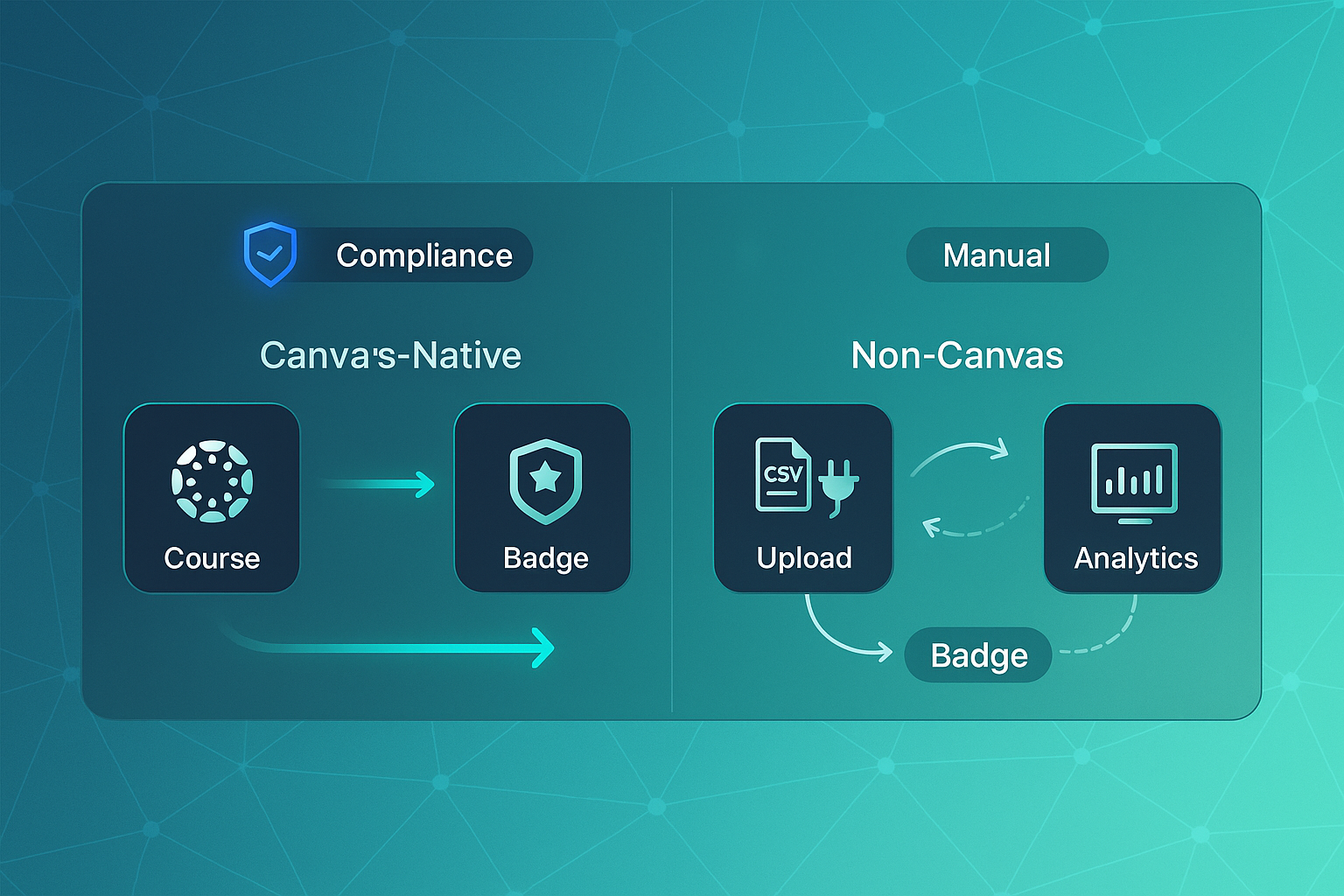
Here’s a side-by-side look at how Canvas-native compares with non-Canvas workflows:
| Feature | Canvas Native | Moodle/API/CSV |
|---|---|---|
| Real-time badge issuing | Yes | Manual/batch only |
| Pathway automation | Full | Manual/stepwise |
| Engagement analytics | Live, detailed | Lagged, export needed |
| Audit logs/compliance | Integrated | Manual or partial |
| Admin role mapping | Direct | Workaround needed |
If you’re already running on Canvas, this native integration offers automation and compliance that saves time and headaches. I’ve found it the top choice for education teams looking for strong admin tools and instant metrics. For non-Canvas platforms, it’s worth piloting the workflow and analytics before making the leap. If custom analytics or broader LMS compatibility matter most, platforms like Accredible or Sertifier could work better—but for complex educational environments, Canvas Credentials truly shines.
Sign up to try our platform for free
Your application may be approved without further action from you, or we might reach out in case we have any questions.
When you're approved, you will get a welcome email from VerifyEd. You may need to check your spam folder for this.
5. Sertifier
Automation, Analytics, and Reporting
Sertifier makes it surprisingly easy—and quick—to churn out huge batches of branded certificates and badges.
With dynamic fields, you personalise each one for the learner, course, achievement, or specific skill tags.
The template editor is accessible even for non-technical admins, and every bit of branding can be fully customised.
Bulk issuing is a breeze: sending out 10,000 credentials usually wraps up within an hour. That’s a game-changer if you’ve ever been bogged down in manual distribution.
And once credentials go out, Sertifier’s real-time dashboards show you how they’re performing: filter by cohort, date, skill, or instructor, and see every credential’s status—issued, delivered, opened, expired, or revoked.
But here’s where it really gets interesting. Sertifier monitors engagement metrics, such as LinkedIn and website shares, and their recent data shows up to 50% social sharing and 46% site traffic increases.
A systematic review of 101 articles on massive open online courses (MOOCs) identified gamification elements, such as digital badges, as a key indicator within course design for enhancing learner engagement.
That outpaces even Accredible and Credly, where the rate usually sits between 30–40%.
When it comes to reporting, you’re covered with CSV and PDF exports. Automated digests? You can schedule them weekly, making it simple to stay in the loop.
Data segmentation is robust—slice information by instructor, achievement type, or cohort.
If you need your numbers elsewhere, export via API in 2–4 weeks or use manual CSV/XLSX uploads for up to 10,000 records in just 45 minutes.
Blockchain Verification, Security, and Compliance
Every Sertifier credential features blockchain-backed verification, including a QR code and a direct verification URL.
Recipients simply scan to view live status, and audit logs refresh instantly.
For admins, a dashboard displays green ticks for all delivered credentials and event tracking for compliance.
Sertifier’s platform is fully GDPR and CCPA compliant, so audit logs can be exported if regulators request them.
Pricing and Scale
Pricing starts at $75/month for 1,000 recipients or $167/month for 5,000, with unlimited badges per user and a 20% annual discount.
Be mindful: if you pass a certain threshold, you’ll move up to the next tier, so track your usage closely.
Compared to VerifyEd’s £0.75/credential pay-as-you-go model, Sertifier often gives a cost advantage if you’re issuing multiple badges to each individual.
Integrations and Onboarding
Plug-ins are ready for you: Sertifier connects directly to Canvas, Moodle, Thinkific, and LearnDash.
A plug-in setup typically takes just 2–7 days, while custom API integrations might need 2–4 weeks.
Bulk uploads and exports wrap up in under an hour.
Responsive support—with setup guides and live chat—means answers land within 4 hours on average, smoothing out implementation hiccups.
Outcomes and Market Comparison
In practice, Sertifier helps MOOC providers see 38–50% LinkedIn share rates, over 12% enrolment growth, and 80%+ time and cost reductions versus manual methods.
On analytics and engagement, Sertifier is every bit the equal of Accredible or Credly—and, in many scenarios, pulls ahead.
6. SimpleCert
Bulk Issuance Workflow and Automated Controls
SimpleCert is purpose-built for large-scale digital credentialing, letting you breeze through tasks that typically slow admins down. Upload up to 10,000 recipients in a single batch using CSV, XLSX, or XLS.
Customise every template with your brand, and make edits for new events—your designs stay flexible.
Credential delivery is instant or scheduled, and powerful API and Zapier integrations remove repetitive manual steps entirely.
If you prefer automation, you can connect Google Sheets or Forms to trigger batch sends, turning once-tedious processes into background tasks.
Real-time bounce alerts notify admins within minutes if something fails to deliver, while the live dashboard flags what needs resending—so recovery is quick and precise.
Here’s how core workflows and controls play out day-to-day with SimpleCert:
- Recipient Credential Access
Secure links or portal logins let learners access certificates; admins or recipients can easily resend if delivery fails. - Audit Logs and Admin Roles
Every upload, issuance, edit, or bounce is tracked in real time, with up to five admin logins. - Integration Setup
Deploy API keys or Zapier automations to connect Sheets/Forms for hands-free credential issuing.
Pricing, Specs, and Results
SimpleCert credits start at $29 for 150 ($0.19/cert), $79 for 1,000 ($0.079/cert), and reach $0.06/credential for 10,000+. There’s no credit expiry, and every plan includes unlimited free resends/edits.
5,000 credentials process in under five minutes, with bounce notifications hitting admins in one to two minutes—usually reissued just as fast.
Here’s a quick glance at major event costs across leading platforms:
| Event Size | SimpleCert | Accredible (annual) | Credly (annual) |
|---|---|---|---|
| 2,000 recipients | $158 | $996+ | $2,500+ |
| 5,000 recipients | $395 | $2,500+ | $5,000+ |
In one 2025 university MOOC campaign, 98% of 15,000 credentials were issued in five minutes.
Admin workload dropped 95%, and support claims nearly disappeared due to instant portal recovery.
For seasonal or variable cohort providers, on-demand credits save up to 40% against annual models.
Every certificate features a QR code for secure, on-the-spot employer verification. If you demand permanent, blockchain-based proof, alternatives like CertifyMe may suit—something we’ll explore next.
7. CertifyMe
Blockchain Security and Instant Verification
CertifyMe takes things up a notch by securing certificates, badges, and transcripts using blockchain technology. Every credential gets a cryptographic signature, making it instantly verifiable with either a QR code or a secure link. And when someone scans it, you see the full breakdown—issuer details, awardee name, award date, and that all-important blockchain confirmation.
Audit logs record every verification, so compliance with GDPR, FERPA, and COPPA is covered without extra hassle. For providers dealing with regulated learning, this layer of security isn’t just a fancy bonus—it’s essential for trust.
Automated Issuing: Zapier/API Workflows
Setting up CertifyMe’s automations starts with Zapier or direct API connections. You can, for example, trigger certificate issuing straight from a “Course Completed” event in Teachable—no need for manual input. To get this working, field mapping is key: each student’s name, email, achievement, and award date are lined up with CertifyMe’s template fields.
Once you run sample tests to check everything matches, bulk uploads via CSV handle up to 7,000 records per batch. The dashboard will flag any errors immediately, so fixes are fast.
Pricing Comparison and Recommendations
Looking at CertifyMe’s pricing, the Starter plan lands at $20/month for 500 credentials a year, Standard sits at $65/month for 2,000 credentials, and WhiteLabel jumps to $200/month for 8,000—ideal as your student numbers climb and custom branding matters. If I were piloting bulk credentials, I’d go Starter or Standard first, bumping up to WhiteLabel when student numbers grow or branding is needed. Transparent volume pricing and batch billing help avoid surprise overspend, especially compared to fixed annual plans.
Transcript Automation and Real Example
Transcript requests run automatically too—staff simply digitally approve, and the finished PDFs anchor straight to blockchain. Take Hobart E-learning as an example: automating credential audits with CertifyMe grew enrolments by 1,230 and cut error rates by 90% in just three months versus manual methods.
Credential batches of up to 7,000 process in minutes, with instant dashboard confirmation—so employers and students get results right away. That’s the kind of efficiency online providers can bank on.
8. Open Badge Factory
Open Badge Factory (OBF) really shines for organisations managing digital credentials at scale—especially those juggling multiple sites or needing decentralised control.
The way it's built, you can create badge templates centrally and then hand issuing rights over to sub-organisations—think multi-campus universities, training consortia, or sprawling corporate programmes.
Managers get to keep an eye on everything from one place, with live dashboards tracking badge delivery and engagement across every cohort.
For 2025, OBF comes in three subscription tiers: Basic at €220/year (excluding VAT), Premium at €700/year, and Pro at €1,280/year.
The Premium plan gives you unlimited badge design—but limits you to 15,000 badges per year—while Pro pushes the ceiling to 50,000.
Need more? Extra badge packs are available for under €500.
Advanced features like sub-organisation management, white-labelling, and blockchain-based verification (Pro+Blockchain) can be bolted on as you grow.
There’s even a 60-day free trial, and supporting sub-organisations costs €220/year for Premium and Pro.
OBF plays nicely with other systems too.
There’s an Open API for automated issuing, LTI links for LMSs such as Moodle, and bulk uploads via CSV or email.
The Moodle plugin makes setup fast—often within four hours—and enables detailed cohort mapping.
Badges can even sync with Open Badge Passport, so achievements travel internationally.
On the compliance side, all data sits securely on EU servers, badges meet IMS Global specs, and GDPR privacy standards are locked in.
For education and NGO networks, OBF helps issue thousands—sometimes tens of thousands—of badges every year, cutting admin time while supporting simple audit reporting and global badge sharing.
9. Certifier
Automated Credential Issuing and Compliance
Certifier offers GDPR compliance and secures all client data on AWS Europe servers.
Every credential—be it for CPD (Continuing Professional Development), webinars, or MOOCs (Massive Open Online Courses)—is export-ready for audits and regulatory checks.
Its commitment to privacy-by-design and ISO 27001 certification brings extra peace of mind, especially for organisations with strict data residency needs.
In addition, unlike some competitors, Certifier’s free plan is watermark-free, and data always stays within the EU. Automation means 500 credentials can be issued in under 30 minutes—a process that would otherwise take four hours by hand.
Pricing and Scaling
Certifier offers a range of plans tailored to different organisation sizes and needs. Here’s how the pricing levels break down:
- Free
$0/month, 250 certificates per year, watermark-free. - Starter
$50/month, 250 certificates per year. - Professional
$110/month, 1,000 certificates, analytics. - Advanced
$339–$399/month, 3,000 certificates, multi-user. - Enterprise
Custom pricing, more than 3,000 certificates.
Pay annually and you’ll save roughly 15%. There are no onboarding fees, and plans upgrade flexibly as your needs grow.
Integrations and Automation
Certifier’s integrations with platforms like Moodle, LearnDash, Acadle, Schoology, and Zapier keep everything moving. Setups typically finish in under four hours.
Need CRM or HRIS integration? That usually wraps up in 1–2 days. These connections let you automate bulk credentialing for events—cutting admin time by up to 90%. For instance, a 500-person webinar goes from four hours of work to just 30 minutes, with real-time dashboards making error-tracking effortless.
10. Virtualbadge.io
Social Sharing and Branding Features
Virtualbadge.io takes social sharing seriously. Every badge or certificate is built to be shared instantly across LinkedIn and other networks, which transforms learners into organic ambassadors for your programme.
You’ve got full creative control too—admins can apply their own branding, logos, and backgrounds. The analytics dashboard then tracks how your badges are claimed, downloaded, and shared, so every campaign’s impact is visible.
Pricing and Scale Fit
The pricing is easy to scale. Starting at $420/year for 300 credentials, you’ll pay as little as $0.26 per credential if you’re running large annual campaigns that push past 15,000 recipients. Enterprise plans open up unlimited templates, advanced branding, custom domains, and branded validation pages—handy if you’re looking for total flexibility and big visibility.
Integration and Event Automation
Connecting Virtualbadge.io into your workflow is simple. You can hook into major LMS platforms using API or automate with Zapier, Google Sheets, and Zoom, making certificate delivery effortless after courses or events. Dynamic fields, QR code verification, and instant analytics mean credential management runs smoothly for organisers juggling multiple events.
Outcome Scenarios for Marketing-Driven Credentialing
During campaigns like #EUvsVirus Hackathon, Virtualbadge.io saw 35–50% share rates, spreading the word and fuelling fast audience growth. These engagement stats aren’t just for show—they help organisers tweak strategies to maximise reach for MOOCs and branded events.
How to choose the best digital credential management software for your organisation
Scenario-to-Platform Mapping: Proven Outcomes and Key Details
When you’re in the market for digital credentialing software, there’s no shortcut—matching what your organisation actually needs to the right platform takes more than ticking off features.
The smartest way? Anchoring your decision to outcome-driven scenarios, where evidence really speaks.
Let’s clarify some terms you’ll see throughout: bulk issuance means sending digital certificates to a big group all at once.
A cohort is just a batch of learners.
Onboarding waiver removes those initial setup fees for using the software.
Branding control is your ability to craft certificates and badges that truly feel like your institution.
Here’s how leading platforms compare across the most common scenarios.
Take a look:
| Scenario | Platform Recommendations | Outcome Evidence |
|---|---|---|
| High-volume MOOCs/events (large cohorts, cost-sensitive) | VerifyEd, SimpleCert | VerifyEd issued to 5,000+ learners in minutes with real-time delivery tracking (bulk issuance), cost benefit at >3,000. SimpleCert recovered 98% failed deliveries in live campaigns, with admin times typically under 5 minutes. |
| Regulated universities, compliance | Credly, CertifyMe | Credly supports HRIS (Human Resource Information System), SSO (Single Sign-On), and audit trails (secure activity log). CertifyMe processed 8,000 batch credentials/month with immediate compliance exports; SSO enablement confirmed within contract. |
| Marketing/viral campaigns | Sertifier, Accredible, Virtualbadge.io | Sertifier achieved 46% LinkedIn share rate in a 2024 campaign. Accredible and Virtualbadge.io drove referral sign-ups up to +50% over baseline for viral events. |
| White-labelled branding | Sertifier, Accredible | Branded launches using Sertifier and Accredible produced 16% higher engagement and full logo-custom certificates. Branding control is confirmed before finalising contract. |
You can use this reference table to quickly gauge which platform will match your goals and technical constraints.
With these options benchmarked, the next step is to test them in your own context and workflows.
Stepwise Pilot and Validation Guide
A structured pilot is the surest way to avoid regret and confirm the platform suits your workflows.
Here’s a simple process to follow:
- Run live pilot cohort (1–2 weeks)
Issue the same credential batch to learners across your top two or three shortlisted platforms. - Benchmark metrics against proven outcomes
Aim for above 40% share rates, 70%+ admin time reduction, and error recovery under three minutes—just like VerifyEd (5,000+ learners in under five minutes) and Sertifier (46% share rate). - Collect feedback within 3 days post-issue
Survey admins and learners regarding friction, branding satisfaction, and support speed. - Request compliance and onboarding documentation
Ask for data residency guarantees, onboarding contacts, and fee waivers—responses typically arrive within 2–5 business days.
Once your validation pilot is complete, it’s time to transition toward full-scale launch.
Strategic contracting decisions will guide this move and help ensure you’re prepared for rapid growth or seasonality.
Strategic Contracting and Launch Tips
Now that your pilot’s wrapped, a few contracting moves will position your launch for success.
Consider the following strategies during contract negotiation:
- Negotiate for scaling/overage upfront
Secure bulk pricing and onboarding waivers when finalising contracts if you expect large or seasonal cohorts. - Clarify branding and login limits
Double-check details around branding controls, admin logins, and audit trail exports before committing. - Cross-check with peer review networks
Scan EdTech communities or groups on LinkedIn for hands-on implementation feedback.
With contracts finalised and your team poised for launch, ongoing research and peer support become vital for smooth rollout and continued success.
These next resources will help you keep learning, stay informed, and adapt your approach as your credentialing programme evolves.
Trusted Resources for Next Steps
When you’re ready for deeper research or peer help, start here:
- 1EdTech case studies/open badge library
Blueprints, benchmarks, and technical sector guidance. - Digital Credential Case Study Library (2025)
Real rollout records, sorted by region and sector, for practical insight. - EdTech procurement/peer forums
Administrator discussions for current launch lessons and negotiation advice.
Sharing your results and learnings after launch is practically a rite of passage now.
Help others in your field, and raise standards for everyone.
Choosing the Best Digital Credential Management Software for You
The real difference between digital credential platforms isn’t just in features—it’s in how well they fit your specific goals and workflows. I’ve seen too many teams rush into a platform, only to hit roadblocks with integration, branding, or support. The smartest move is to pilot your top contenders side by side, benchmark real outcomes, and gather feedback from both admins and learners.
Here’s my advice: don’t settle for a platform that only looks good on paper. Run a live test, check for seamless automation, and confirm that analytics and compliance match your needs. Negotiate contract terms up front—especially for scaling, branding, and onboarding—and always cross-check peer reviews before you commit.
Digital credentialing should make recognition effortless, secure, and scalable for your organisation. The right platform won’t just save you time—it will amplify your impact and reputation for years to come.
.svg)



.png)

